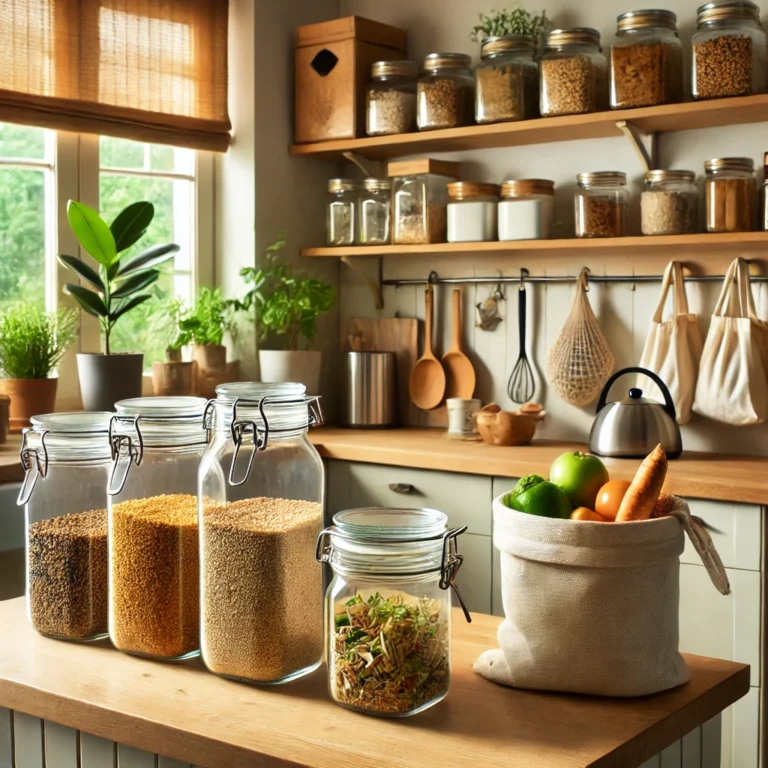Physical Address
304 North Cardinal St.
Dorchester Center, MA 02124
Physical Address
304 North Cardinal St.
Dorchester Center, MA 02124


Have you ever thought about the waste your household produces? From food scraps to packaging, waste can pile up quickly and impact the environment. But here’s the good news: reducing waste at home doesn’t have to be complicated. With a few simple changes, you can significantly lower your household’s waste output and make a positive difference for the planet.
In this article, we’ll explore five practical ways to cut down on household waste. These tips are easy to follow and effective, regardless of where you live. Let’s dive in and discover how a few mindful habits can help create an eco-friendly home.
Plastic waste is a global issue, with millions of tons of plastic ending up in landfills and oceans every year. A straightforward way to reduce household waste is by saying no to single-use plastics. Opt for reusable bags, containers, and water bottles instead.
For example, a family in France made the switch from plastic to glass storage containers for their groceries. They noticed not only a reduction in waste but also fresher food that lasted longer. This small change has since become a daily habit for them, saving countless plastic bags and containers from being discarded.
Pro Tip: Keep a reusable bag in your car or purse so you’ll always have one on hand for unexpected shopping trips. To learn more about the impact of plastic on the environment, check out this article on WWF’s plastic pollution page.
Composting is a fantastic way to reduce household waste and create nutrient-rich soil for gardening. You don’t need a large backyard; many cities offer community composting programs or indoor composting options.
Consider the example of Carlos, a city-dweller in Mexico City who started composting his food scraps. With a small indoor compost bin, Carlos reduced his weekly garbage output by almost 40%. Plus, he now has a steady supply of compost for his balcony garden.
Pro Tip: Start small by collecting food scraps like vegetable peels, coffee grounds, and eggshells. For more information on composting at home, visit EPA’s composting guide.
Buying in bulk is an excellent way to cut down on packaging waste. Many bulk stores encourage customers to bring their own containers, which can help you avoid single-use packaging entirely.
In South Korea, families often visit local markets that sell grains, spices, and other foods in bulk. This shopping approach reduces waste and often saves money. For instance, reusable jars filled with rice, beans, and grains have become a staple in their homes, cutting down on unnecessary plastic packaging.
Pro Tip: When shopping for dry goods like pasta, rice, or nuts, bring a few jars or cloth bags. Be sure to label the containers with the item’s weight to avoid overpacking. For some tips on sustainable shopping, explore this guide by Greenpeace.
Before tossing items out, think about how they might be reused or repurposed. For instance, glass jars can become storage containers, and old t-shirts can be turned into cleaning rags.
In Australia, Jessica began repurposing items around her house to reduce waste. She transformed empty glass jars into herb planters and used cardboard boxes as organizers. By reimagining these items, Jessica cut down on her household waste while adding a touch of creativity to her home decor.
Pro Tip: Look for inspiration online to repurpose common household items. Websites like Recycle Now have plenty of ideas for upcycling and reusing.
Cleaning products often come in plastic packaging and contain chemicals that are harmful to the environment. Opt for eco-friendly cleaning solutions that use natural ingredients and come in recyclable or refillable packaging.
Take, for example, Anika from India. She started making her own all-purpose cleaner using vinegar, water, and lemon peels. Not only did this save her money, but it also kept her home chemical-free. Today, Anika swears by this homemade cleaner and loves how fresh it leaves her home smelling.
Pro Tip: You can create your own natural cleaners with common ingredients like baking soda, vinegar, and essential oils. If you prefer buying products, look for brands that offer refillable options. For more DIY cleaning recipes, visit NRDC’s green cleaning guide.
Each of these waste reduction strategies might seem small, but together, they can make a significant impact on your household’s environmental footprint. Which of these tips will you try first? Or, do you already have some go-to eco-friendly practices? Share your thoughts below, and let’s inspire each other to create a greener, cleaner world.
By taking these simple steps, you’re not only reducing waste but also contributing to a more sustainable future for all. Remember, every small change counts, so let’s get started today!